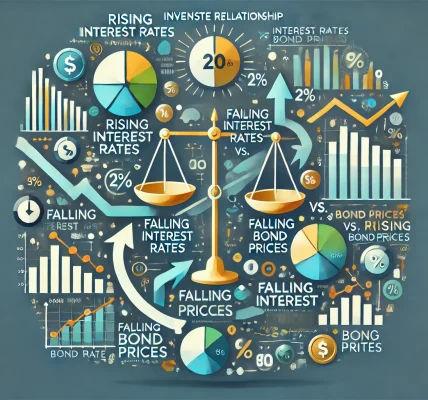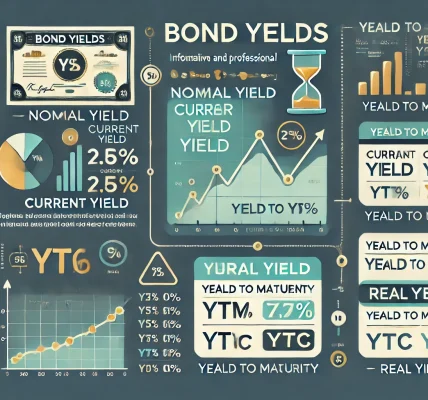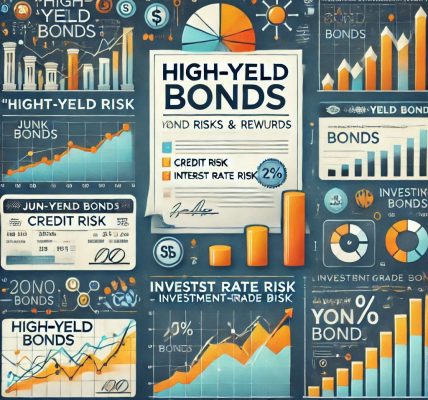Bonds are a preferred investment choice for risk-averse investors seeking stable returns and predictable income. However, not all bonds are created equal. Callable bonds and non-callable bonds differ in terms of structure, risk, and return potential, making it essential for investors to understand their distinct characteristics.
In this detailed guide, we will explore the differences between callable and non-callable bonds, highlight their pros and cons, and help you decide which type of bond is better suited for your investment portfolio.
🎯 Understanding Callable Bonds: An Overview
💡 What Are Callable Bonds?
A callable bond is a bond that allows the issuer to repay (call) the bond before its maturity date, usually after a specified period, known as the call protection period. The issuer typically exercises this option when interest rates fall, allowing them to refinance their debt at a lower rate.
📊 How Callable Bonds Work:
- Issue: A company or government issues a bond with a fixed interest rate and maturity period.
- Call Option: The issuer retains the right to call the bond before maturity after a predetermined period.
- Redemption: If interest rates drop, the issuer can redeem the bond early and reissue debt at a lower interest rate.
📝 Example:
- A corporation issues a 10-year callable bond with a 5% coupon rate and a 5-year call protection period.
- After 5 years, if interest rates fall to 3%, the issuer may call the bond and refinance at the lower rate.
✅ Pros of Callable Bonds
📈 1. Higher Coupon Rates
Callable bonds often offer higher interest rates than non-callable bonds to compensate investors for the additional risk of early redemption.
📊 2. Potential for Early Payouts
If the issuer calls the bond, investors receive their principal back early, which can be beneficial in certain market conditions.
⚡ 3. Attractive in Low-Interest Environments
Callable bonds provide higher yields in a low-interest environment, offering better income opportunities for investors.
❗ Cons of Callable Bonds
📉 1. Reinvestment Risk
When callable bonds are redeemed early, investors are forced to reinvest the proceeds at lower interest rates, leading to reduced future income.
🔄 2. Limited Capital Appreciation
Since callable bonds can be redeemed early, there’s limited scope for capital appreciation, capping the potential returns.
⚠️ 3. Uncertainty and Reduced Predictability
Investors face uncertainty regarding the bond’s lifespan, making it difficult to plan long-term financial goals.
📈 Understanding Non-Callable Bonds: An Overview
💡 What Are Non-Callable Bonds?
A non-callable bond is a bond that does not allow the issuer to repay the bond before its maturity date. This type of bond guarantees that investors will receive interest payments and their principal amount until the bond’s maturity, regardless of changes in interest rates.
📊 How Non-Callable Bonds Work:
- Issue: The bond is issued with a fixed interest rate and maturity period.
- No Call Option: The issuer cannot redeem the bond before its maturity date.
- Maturity: Investors receive regular interest payments and full repayment of the principal at maturity.
📝 Example:
- A government issues a 10-year non-callable bond with a 4% coupon rate.
- Regardless of whether interest rates rise or fall, the issuer is obligated to honor the original terms until the bond matures.
✅ Pros of Non-Callable Bonds
📊 1. Predictable Income Stream
Non-callable bonds provide a stable and predictable income stream since they cannot be redeemed before maturity.
🔒 2. Protection Against Reinvestment Risk
Investors are shielded from reinvestment risk as the bond remains in place until maturity, locking in the interest rate.
📈 3. Capital Appreciation Potential
If interest rates fall, the market value of non-callable bonds can rise, allowing investors to benefit from potential price appreciation.
❗ Cons of Non-Callable Bonds
📉 1. Lower Yields Compared to Callable Bonds
To offset the issuer’s lack of flexibility, non-callable bonds generally offer lower yields than callable bonds.
⚡ 2. Opportunity Cost in Rising Interest Rate Environments
In a rising interest rate environment, non-callable bonds may underperform as investors are locked into lower interest rates.
🔍 Key Differences Between Callable and Non-Callable Bonds
| Feature | Callable Bonds | Non-Callable Bonds |
|---|---|---|
| Issuer Flexibility | Can be redeemed early | Cannot be redeemed early |
| Coupon Rate | Higher to compensate for call risk | Lower due to reduced risk |
| Reinvestment Risk | Higher due to early redemption | Minimal, as bonds mature as scheduled |
| Income Stability | Less predictable due to call option | Highly predictable and stable |
| Capital Appreciation | Limited due to call provision | Potential for price appreciation |
| Investor Risk | Higher, as the bond may be called | Lower, as bond terms remain fixed |
📝 When Should You Choose Callable Bonds?
✅ Ideal for:
- Aggressive investors seeking higher yields.
- Income seekers willing to accept reinvestment risk.
- Short-to-medium term investors who want the potential for early payouts.
❗ Avoid Callable Bonds If:
- You prefer predictable income without the risk of early redemption.
- You want to avoid reinvestment risk in a falling interest rate environment.
📝 When Should You Choose Non-Callable Bonds?
✅ Ideal for:
- Conservative investors who prioritize stability and predictable income.
- Long-term investors seeking protection from reinvestment risk.
- Retirees who need a reliable income stream for financial security.
❗ Avoid Non-Callable Bonds If:
- You are looking for higher yields and are willing to take on additional risk.
- You want to capitalize on falling interest rates with early redemptions.
🛡️ Mitigating Risks When Investing in Bonds
⚠️ 1. Diversify Your Bond Portfolio
A mix of callable and non-callable bonds can balance risk and return while protecting against interest rate fluctuations.
⚠️ 2. Consider Bond Ladders
Building a bond ladder involves purchasing bonds with staggered maturities to mitigate reinvestment risk and ensure a steady cash flow.
⚠️ 3. Analyze Interest Rate Trends
Monitor interest rate trends and adjust your bond portfolio accordingly. Callable bonds may outperform in stable or rising rate environments, while non-callable bonds excel in falling rate environments.
⚖️ Legal Considerations for Bond Investments
✅ 1. Avoid Providing Personalized Investment Advice
Always present information as educational content and avoid recommending specific bonds or strategies tailored to individual investors.
✅ 2. Disclose Risks and Market Conditions
Highlight that bond prices and yields are subject to market changes and that past performance is not indicative of future results.
✅ 3. Encourage Due Diligence
Advise investors to perform due diligence or consult with a financial advisor before making investment decisions.
📊 Summary: Key Takeaways
- Callable bonds offer higher yields but come with reinvestment risk.
- Non-callable bonds provide stable income and protection against early redemption.
- Diversification and risk management can optimize bond portfolios for different market conditions.
- Understanding the pros and cons of callable and non-callable bonds can help investors align their strategies with their financial goals.
By evaluating the risks and benefits of these bond types, investors can make informed decisions that enhance portfolio performance while minimizing potential risks.
🎯 Final Thoughts
By understanding the nuances between callable and non-callable bonds, investors can make well-informed decisions that align with their financial objectives. A balanced portfolio may include a combination of both bond types to optimize returns and manage risk effectively.
Would you like me to create another detailed blog or generate more visuals for your website? 😊




